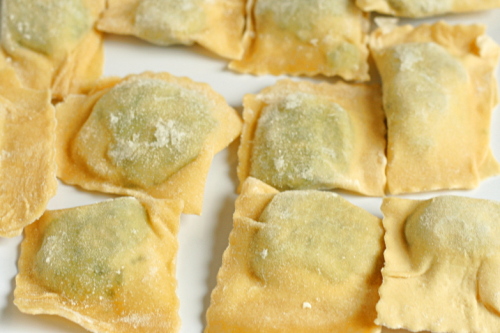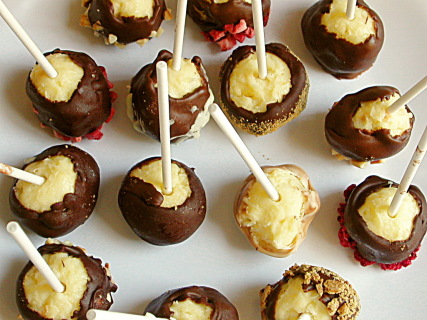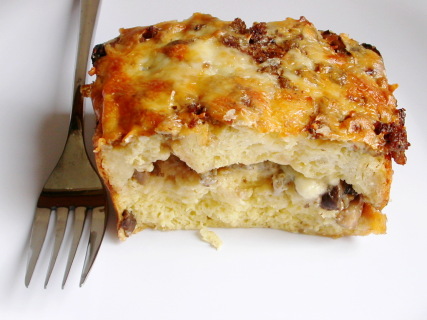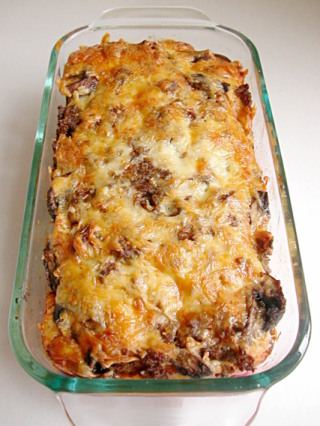By now it must be obvious that I like eggs on top of stuff. Poached are my favorite, but fried is fine too. With some potatoes or bread to soak up the creamy yolk and any number of other additions, a lot of my favorite breakfasts are based around eggs on stuff.
I’m not completely sure that this particular breakfast deserves its own recipe, although I apparently needed one to give me the idea. All it really is some crusty bread, halved horizontally, brushed with oil and topped with green onions, cheese, and cooked sausage. The pizzas are cooked until the cheese melts, then topped with a fried egg and more green onions.
I kept the basic structure of the recipe the same, but varied the details. I used some extra pain a l’ancienne that I had in the freezer, plus cheddar instead of pepper jack and breakfast sausage instead of Italian. The recipe instructs that chopped green onions should be mixed with a half cup of olive oil, which is rubbed on the bread and then drizzled over the egg at the end. I’m sure I don’t have to tell you that is a heck of a lot of oil (even for eight servings). I used just enough to coat the bread before adding the other toppings, and I (meant to but forgot to) sprinkled more chopped green onions over the egg, leaving the oil behind.
Dave and I couldn’t quite figure out if we should eat these with silverware or hands. Dave tried using silverware, and it seemed like sort of a disaster. I ended up picking mine up to eat it with my hands, and it worked pretty well. I was thinking that the yolk might be a drippy mess, but it mostly soaked into the bread below. So disregard the silverware in the pictures – I’m pretty sure silverware is not the way to go here. It is pizza, after all.
You can vary the ingredients to use whatever seems good to you. Any crusty chewy bread will work, and any cheese or cooked meat. Any way you go about it, this should be an easy and fun breakfast to put together and eat.
Fried Egg and Sausage Ciabatta Breakfast Pizzas (from Bon Appétit January 2008, but really epicurious.com)
BA note: Make this recipe your own by using different sausages and cheeses. For a Middle Eastern spin, sub in lamb sausage and feta. Serve pizzas with hot sauce.
Bridget note: I used breakfast sausage, cheddar cheese, pane a l’ancienne, and far less oil.
Makes 8 servings
1 loaf ciabatta bread (about 1 pound)
1 cup chopped green onions
8 tablespoons olive oil, divided
8 ounces sliced hot pepper Monterey Jack cheese
1 pound spicy or sweet Italian sausages, casings removed
8 large eggs
Preheat oven to 450°F. Cut bread horizontally in half. Place bread halves, cut side up, on separate baking sheets. Mix onions and 6 tablespoons oil in small bowl. Season with salt and pepper. Reserve 2 tablespoons onion oil and spread remaining onion oil over bread. Top with cheese.
Sauté Italian sausages in large nonstick skillet over medium-high heat until cooked through, breaking up with spoon, about 7 minutes. Divide sausage among bread halves. Bake pizzas until cheese melts and bread begins to crisp, about 10 minutes.
Meanwhile, heat 1 tablespoon oil in each of 2 large skillets over medium-high heat. Crack 4 eggs into each skillet. Sprinkle with salt and pepper. Cook 2 minutes. Remove from heat and let eggs stand in skillets while pizzas bake.
Arrange 4 eggs atop each pizza. Spoon reserved onion oil over eggs. Cut each pizza between eggs into 4 pieces.




















































